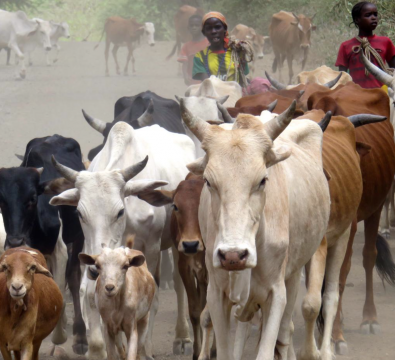ASSAR Regional Diagnostic Studies


Home to hundreds of millions of people, the semi-arid regions of Africa and Asia are particularly vulnerable to climate-related impacts and risks. Working in 11 countries in these regions, ASSAR is a research project that seeks to understand the factors that have prevented climate change adaptation from being more widespread and successful.
The first phase of ASSAR was to investigate what people in semi-arid regions currently know about climate change, and what they’re doing to adapt to these changes. From March 2014 to April 2015, each team gathered this information for their regions through meetings with stakeholders, and literature searches. The regional diagnostic studies below detail their findings, please click on the provided links to read more.
ASSAR – Adaptation at scale in semi-arid regions:
ASSAR is a 5-year research project, (March 2014 to December 2018) funded by Canadian IDRC (International Development Research Centre) and DFID, that seeks to better understand the barriers and enablers to widespread and transformative adaptation at multiple governance scales, to advance adaptive livelihoods for vulnerable groups. If you are interested to read more about the ASSAR project, please follow the link provided below.
Click here to reach the main weADAPT ASSAR page.
ASSAR Regional Diagnostic Studies
Southern Africa: The semi-arid areas of Southern Africa are culturally and ecologically diverse characterised by a high proportion of poor people with limited access to services, high unemployment levels, high levels of inequality, and high levels of HIV and AIDS. In addition to agriculture, the people living in these areas are reliant on a variety of natural resources, employment and remittances for their livelihoods due to the relatively low agricultural productivity of land. Numerous coping and adaptation interventions have been implemented and suggested for semi-arid areas in Southern Africa. If you are interested in reading more about ASSAR’s work in this region, please read the full report. Report on vulnerability and adaptation to climate change in the semi-arid regions of Southern Africa.
East Africa:
East Africa is characterized by great topographical diversity and a range of local climatic conditions. Annual rainfall cycles are complex, and rainfall variability is the main climate and weather element affecting ecosystem services, agricultural production, and socio-economic development of the region, with frequent drought and flood events. Rising population and high population growth rates in the region are important drivers of change, potentially greatly increasing demand for food, water and livestock forage. Key barriers and enablers to vulnerability reduction are summarized in the report about East Africa. If you are interested in reading more about ASSAR’s work in this region, please read the full report.
Report on vulnerability and adaptation to climate change in the semi-arid regions of East Africa.
West Africa:
Development challenges in the West African drylands have traditionally been analyzed through the prism the late 20th century Sahelian drought, which produced significant hardships in the region. In reality, the drylands hosts an enormous variety of biophysical environments intertwined with highly contrasted socio-economic, demographic and land use conditions, not just the iconic Sahel. The report finds that important barriers to adaptation comprise development, gender, and governance dimensions. If you are interested in reading more about ASSAR’s work in this region, please read the full report.
Report on vulnerability and adaptation to climate change in the semi-arid regions of West Africa.
South Asia:
India’s economic growth has been notably impressive in the last two decades but the country still faces numerous challenges, such as stagnant agricultural growth, rising regional and subregional inequality, unemployment, and inadequate access to public services for the poor. However, there has been a perceptible recent prioritisation aimed at reducing economic and social vulnerability of the poor and building their adaptive capacities. Recognising that the priorities for development and adaptation are closely related, India’s response is primarily shaped by the need to link the development of human, institutional and infrastructural capabilities in building adaptive capacities in people and systems. If you are interested in reading more about ASSAR’s work in this region, please read the full report.
Report on vulnerability and adaptation to climate change in the semi-arid regions of India.
Adaptation in practice:
The Research into Use (RiU) element of the research project Adaptation at Scale in Semi- Arid Regions (ASSAR) aims to ensure that ASSAR’s research outputs and findings are taken-up in adaptation practice and policy spheres across semi-arid regions. For that purpose, the ASSAR consortia is keen to engage with practitioners early in the research process to reflect their views in the research design and in the definition of research questions. In order to solicit views and insights by climate change adaptation practitioners, Oxfam GB, one of ASSAR’s consortia lead partners, collaborated with weADAPT to devise a short online survey. The results of this survey have been analysed and synthesised in a report. If you are interested in reading more about practitioner perspectives on information gaps and needs for adaptation in practice, please follow the link provided below.
Report on climate change adaptation practice in semi-arid regions.
Use and communication of climate information:
Comprehensive and multi-sectoral understanding, communication and use of weather and climate information is key to developing effective adaptation policies, strategies and action plans. One of ASSAR’s research activities focuses on the factors that shape understanding and use of weather and climate information as well as challenges to and opportunities for effective communication of climate information in semi-arid regions of Asia and Africa. If you are interested in reading more about the first phase of the research on climate information and communication, please follow the link below.
(0) Comments
There is no content